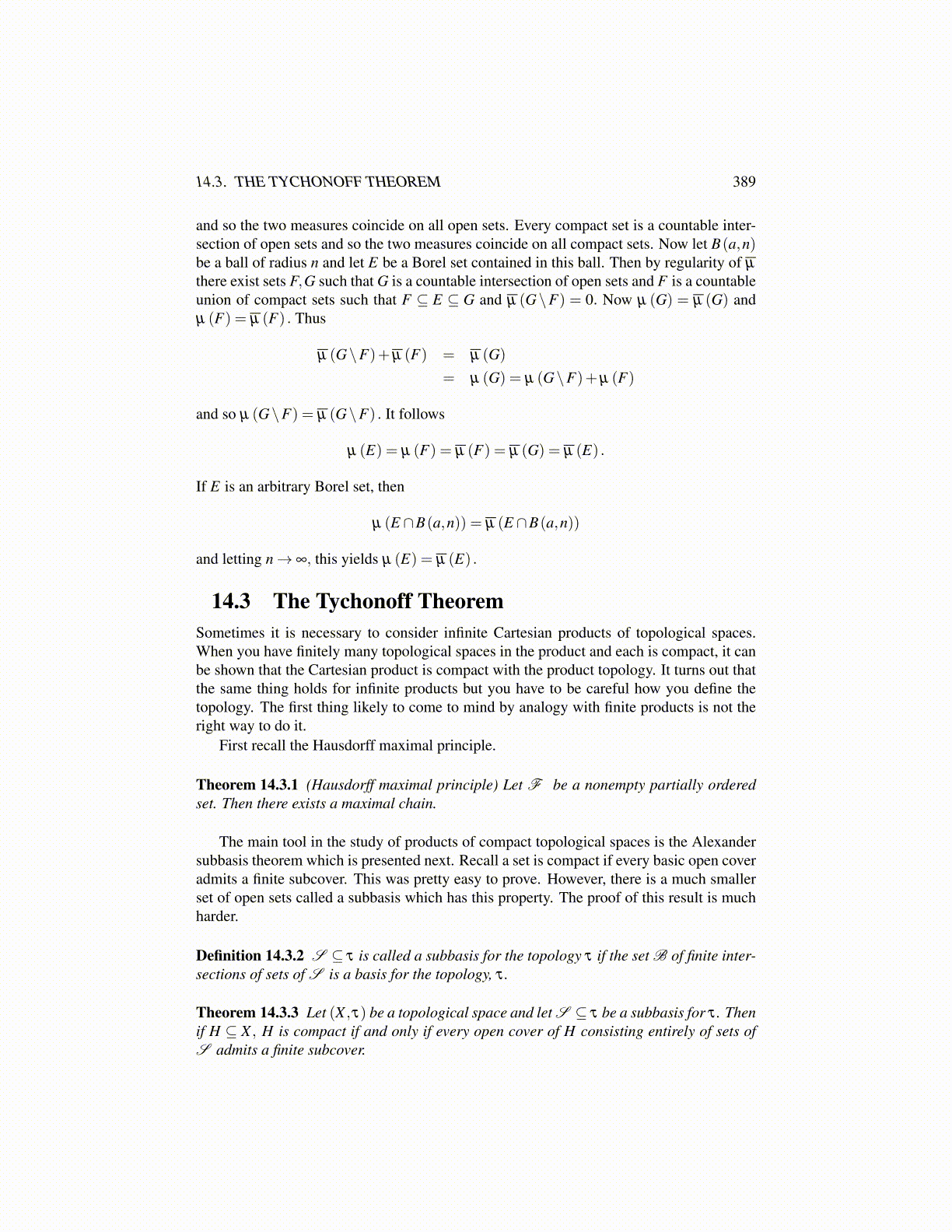
14.3. THE TYCHONOFF THEOREM 389
and so the two measures coincide on all open sets. Every compact set is a countable inter-section of open sets and so the two measures coincide on all compact sets. Now let B(a,n)be a ball of radius n and let E be a Borel set contained in this ball. Then by regularity of µ
there exist sets F,G such that G is a countable intersection of open sets and F is a countableunion of compact sets such that F ⊆ E ⊆ G and µ (G\F) = 0. Now µ (G) = µ (G) andµ (F) = µ (F) . Thus
µ (G\F)+µ (F) = µ (G)
= µ (G) = µ (G\F)+µ (F)
and so µ (G\F) = µ (G\F) . It follows
µ (E) = µ (F) = µ (F) = µ (G) = µ (E) .
If E is an arbitrary Borel set, then
µ (E ∩B(a,n)) = µ (E ∩B(a,n))
and letting n→ ∞, this yields µ (E) = µ (E) .
14.3 The Tychonoff TheoremSometimes it is necessary to consider infinite Cartesian products of topological spaces.When you have finitely many topological spaces in the product and each is compact, it canbe shown that the Cartesian product is compact with the product topology. It turns out thatthe same thing holds for infinite products but you have to be careful how you define thetopology. The first thing likely to come to mind by analogy with finite products is not theright way to do it.
First recall the Hausdorff maximal principle.
Theorem 14.3.1 (Hausdorff maximal principle) Let F be a nonempty partially orderedset. Then there exists a maximal chain.
The main tool in the study of products of compact topological spaces is the Alexandersubbasis theorem which is presented next. Recall a set is compact if every basic open coveradmits a finite subcover. This was pretty easy to prove. However, there is a much smallerset of open sets called a subbasis which has this property. The proof of this result is muchharder.
Definition 14.3.2 S ⊆ τ is called a subbasis for the topology τ if the set B of finite inter-sections of sets of S is a basis for the topology, τ .
Theorem 14.3.3 Let (X ,τ) be a topological space and let S ⊆ τ be a subbasis for τ . Thenif H ⊆ X , H is compact if and only if every open cover of H consisting entirely of sets ofS admits a finite subcover.